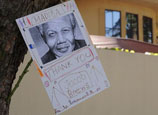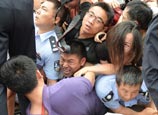
Challenge 2: The Diaoyu Islands Issue
Although with the efforts of China and Japan, the Diaoyu Islands issue has turned low-key, there is still possibility of military conflicts caused by accidental events, said Hatoyama.
Recently China and Indonesia have established a forum to discuss signing legally binding ocean action guidelines and solve the South China Sea dispute by dialogue. Hatoyama hopes that this kind of protocol can not only be applied in South China Sea issues but also in East China Sea issues. Finally it can be developed into a system that prevents conflicts across East Asia.
Challenge 3: Abe administration’s attitude toward Asia
The attitude of Japanese Prime Minister Shinzo Abe's administration is now the main barrier to the resolution of conflicts in East Asia. After Shinzo Abe took office, a great number of Japanese politicians visited the Yasukuni Shrine. Abe himself refused to recognize Japan’s invasion in Asian continent, and implied he would revise former Prime Minister Tomiichi Murayama’s apology for Japan's colonial rule and aggression in Asia as well as the wartime sex slave issue.
Japan’s historical revisionism has caught attention of China, ROK and the U.S., making some people worry about the possibility that Japan might trigger another war in Asia.
There is an urgent need to make the Abe administration shift its Asian policy, and make it learn from the history and extend cooperation with other Asian countries.

















 Mom makes target weight to donate kidney to son
Mom makes target weight to donate kidney to son


![]()
